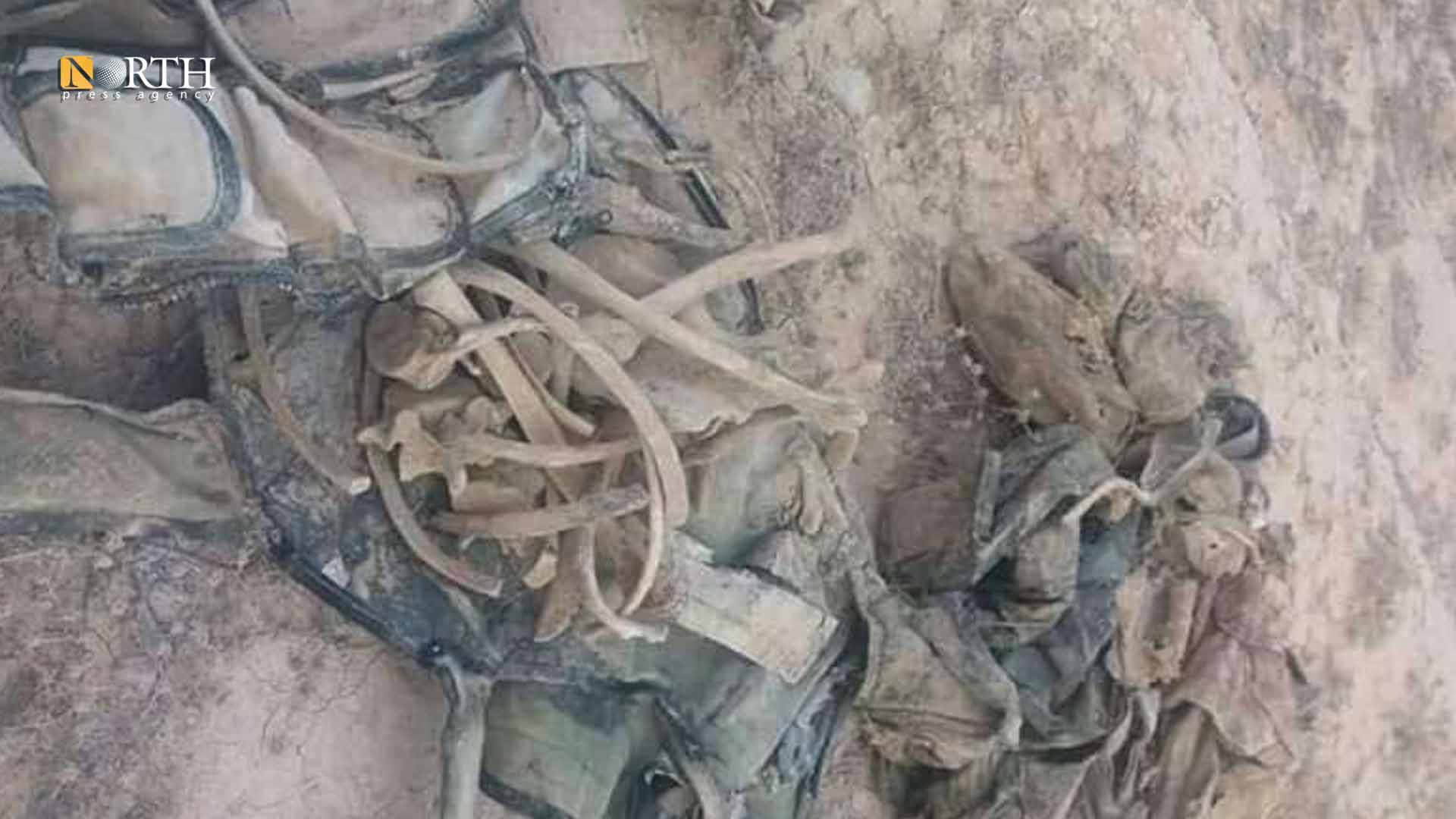
PALMYRA, Syria (North Press) – Abdullah al-Raei and his wife, residents of Palmyra city in the Syrian Desert, are getting ready to return to the site of a mass grave that was recently found in the countryside of Homs in search of the body of their son, who has been missing since ISIS’ takeover of the region in 2016.
Years later, and with the absence of any modern technology, al-Raei and other families of the missing depend on physical signs or assumptions while they search for the bodies. The exhumation is supervised by officers of the government forces and militants of the pro-government National Defense Forces (NDF).
ISIS left many mass graves in the regions it used to control in the Syrian Desert, only some of which have been found.
Those graves include victims of ISIS from Syria and Iraq, bodies of fighters of different military parties, and even some ISIS members.
Syrian authorities should prioritize addressing what happened to people who disappeared in ISIS custody while the group controlled parts of Syria, Human Rights Watch said in a report released in February 2020.
Authorities in areas formerly under ISIS control should make sharing information with families a priority and help create a formal system to address the issue of the missing and allow families to register their cases, the report added.
Difficult search
Al-Raei did not manage to uncover the fate of his son since he was arrested by ISIS members on charges of cooperating with the government forces in the vicinity of Palmyra, as they have not obtained any information about him despite their continuous search.
Over the past years, al-Raei’s family searched different areas, from the countryside of Deir ez-Zor to Homs desert, and resume their search whenever they hear of the discovery of a new mass grave.
Al-Raei fears that his son may have been beheaded in ISIS prison, “and may be buried in one of the mass graves.”
Hana’ al-Khamis, the mother of the missing al-Raei, said she wants to identify the body of her son in order to bury him once again so that she can visit his grave.
Since 2017, eight mass graves were found in the Syrian Desert, according to Anwar al-Jassim, a nurse in the national hospital in Palmyra.
Those graves were discovered in the vicinity of Palmyra city, the towns of al-Sukhna, al-Amiriya, and al-Qaryatayn, and also near the Palmyra mountain range.
Between 50 and 70 bodies were identified in the eight mass graves and handed over to their families, according to al-Jassim.
In mid-July, government forces found a mass grave including the bodies of 30 individuals wearing ISIS-style military uniforms during a combing operation in the vicinity of military points in the Syrian Desert.
The mass grave was inspected in the presence of three forensic pathologists, who came from the capital Damascus on July 19, according to a member of the Fifth Corps of the government forces.
The mass grave was closed by the authorities. In addition, the Fifth Corps and the NDF established a military presence near it, “so that the central leaders in Damascus decide the fate of theses bodies, according to the source.
Assumptions
Families are forced to identify their missing loved ones by marks or features on their bodies due to the absence of analysis laboratories and modern techniques to identify them. Because of this, many families cannot identify the missing and most of the bodies are registered as unidentified, according to al-Jassim.
Moreover, families face difficulties identifying the bodies, as features may have been obscured by their burial and the passage of time.
Palmyra resident Abdullah al-Sayer said he managed to identify the body of his brother who was killed in the prisons of ISIS in mid-2016 on charges of cooperating with the government air force.
Al-Sayer’s family identified their son’s body through an amputated toe in his right foot during the inspection of the body in the mass grave of al-Talah, south of Palmyra, he added.
“The inspection of bodies of the government soldiers should take priority over civilians when the graves are opened. The bodies of the soldiers are transferred to other graves within official records, to be handed over to their families if they were identified,” Hussein al-Karim, a leader in the NDF in Palmyra, said.
“Families of the missing victims are allowed to be present during the process of exhuming the bodies to identify them, al-Karim pointed out.
The unidentified bodies are transferred to a designated cemetery in the vicinity of the town of al-Amiriya in the middle of the Syrian Desert, where they are buried after documenting their contents and giving them numbers in order to facilitate reconsideration.
Although the families of the missing people demanded that the Syrian government bring modern analysis equipment that would enable them to identify the bodies of their relatives, they were not listened to, according to the families of the missing persons.
